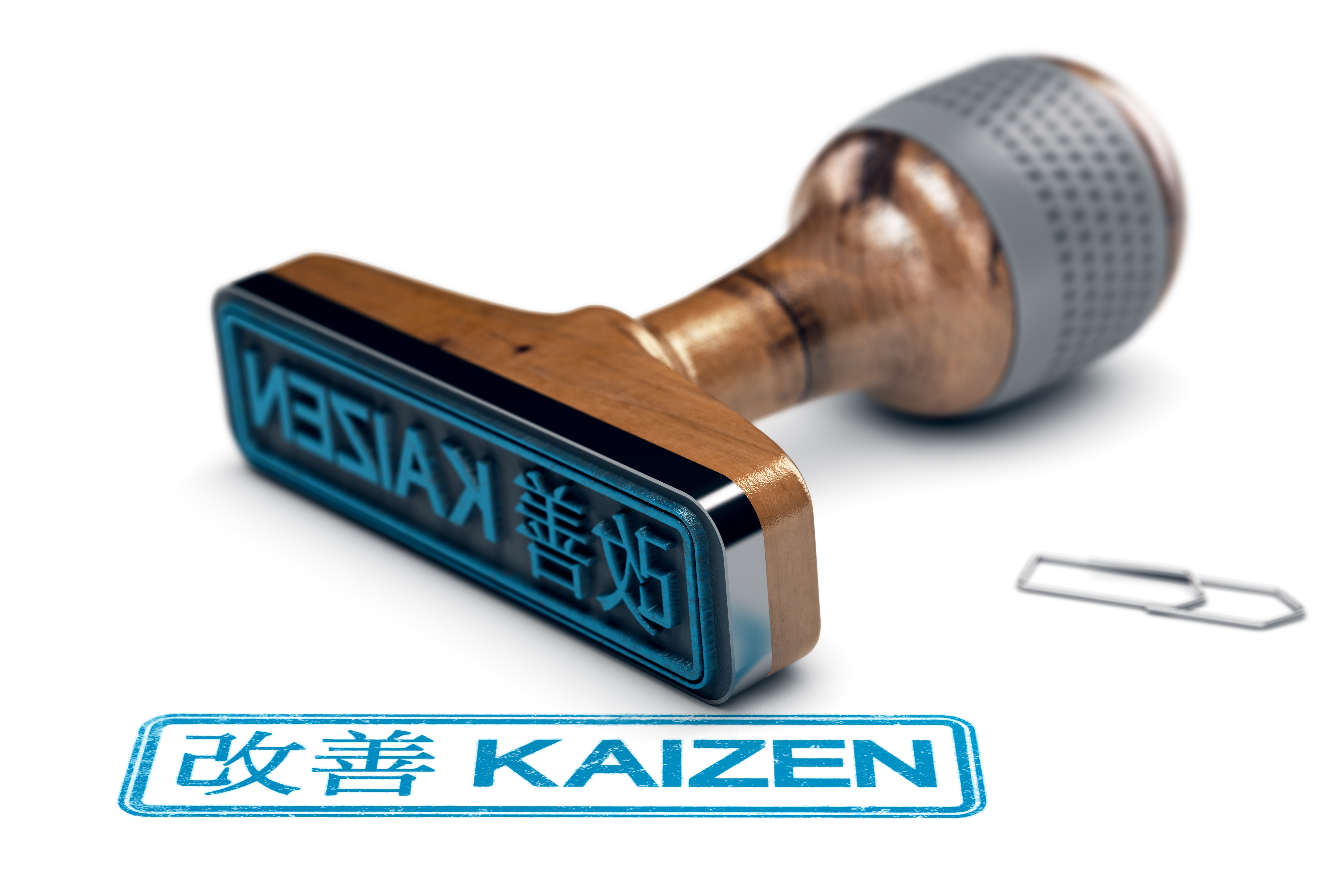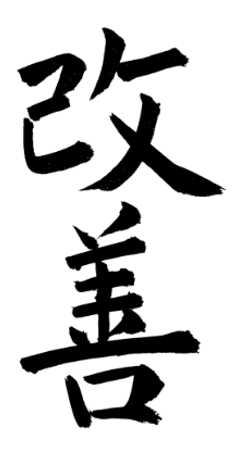An integral part of Lean Thinking is Kaizen or Continuous Improvement. It is a strategy in which all employees within a company will look to achieve regular and incremental improvements in any process within the company, such as within manufacturing, sales, admin or planning, etc. It can be applied in all types of organizations, not restricted to manufacturing, wherever an improvement can be made or is required, Kaizen is the natural fit.
The word “Kaizen” (改善) is the Sino-Japanese word for “improvement” or change for the better. It works based on involvement, cooperation and commitment. It is totally different from traditional to approaches that rely on radical changes or top-down commands and proclamations.
Management Support
Senior management support is vital, without it don’t even think of being successful. You may think this is a rather obvious thing to say, but too many times the level of management support (or lack of it) is the reason for failure. Management needs to do more than just say they are commited, then need to demonstrate commitment to continuous improvement. Management must show their team that they too are always looking for ways to improve the performance of the business, to make it a better place to work, to enable growth to take place.
Furthermore, management must allow the team the time to understand the problem, develop and implement the solution and then to fine-tune the solution. Too many failures occur since the project team has not been given enough time to develop and implement the solution. Project members will need to be given time away from their normal duties to be able to develop the improvement.
Training
Training all members of a Kaizen team is vital for any level of success. A Kaizen team can not be expected to implement successful projects that achieve targeted results if they have not been trained in continuous improvement techniques. The training process itself starts to build engagement within the team. They feel they are being cared for, ensuring that they are being provided with the necessary tools and techniques. The training not only introduces how improvement tools and techniques should be used, but training will also help to develop the mindset that there is always room for improvement. Key in changing the mindset is to understand:
- There are no limitations of assumptions
- Don’t accept the status quo, challenge everything
- The solution does not have to be perfect, it can be developed over time
- Mistakes are allowed and should be learned from
- Every single member of a team should be empowered to feel they have a contribution to make
- Don’t accept the first and obvious reason for a problem, ask the “Five Whys” to get to the root cause of a problem
Focus on Performance Metrics
Improvements can sometimes take time to mature. Very often we find improvements to be incremental, building up over time as implemented solutions are fully embedded. Management can sometimes be too quick to react if the improvement does not achieve the required level of performance change if it does not realize the required financial benefit.
Yes, it is important to tie the output of a Kaizen project to a performance measure, but management must accept that sometimes the results are not instant. They can take time to build. Having senior management support in place, as well as management that understand continous improvement will reduce the likelihood of teams being improvements being judged on intial results.
Kaizen Is More Than a One-Off Project
A client once said to me that they were going to try kick-starting Kaizen again after failing to start any project over the last few months. For Kaizen to be successful, it needs to be continuous and not a project that is performed when there is some time available. The companies that succeed in Kaizen have made Kaizen a way of life, part of the working day with employees continually looking for a better way to do something. As no process can ever be declared perfect, there is always room for improvement.

Kaizen and Demand Flow Technology (DFT) Work Together To Generate Benefits
Although some feel that Kaizen cannot work with Demand Flow Technology, they could not be further from the truth. Companies such as Advanced Energy continue to succeed through adapting and redesigning from their original design in 2013.
As most will understand implementing DFT for the first time is not about creating incremental change. DFT will always deliver step-change as opposed to gradual incremental change as Jim Quasey, Senior Vice President of Industrial Scientific quoted
A new state of the art headquarters facility warrants a world-class manufacturing and service operation. We weren’t looking for an incremental change, we needed step function level change. High Impact Coaching & Strategies offered extensive hands-on experience and a history of results that met our needs…and they delivered
With Demand Flow Technology we follow a structured path where DFT enables step-change improvements that deliver substantial bottom-line improvements as we identified in another one of our Demand Driven Insights: Demand Flow Technology Benefits – Review of an Implementation. In every Demand Flow Technology project we utilize multiple tools like Kaizen, 5S, and Poka-Yoke to enable further productivity improvements and to ensure our new is deployed in a clean and functional environment, and typically in less space. In addition to using such tools as Kaizen during our DFT implementations, they are also used to adapt and change the flow line as time goes by to gain further benefits.
When it comes to improvement, we should never stand still.
Newsletter Sign-Up
Keep up-to-date on what’s happening in our Demand Driven World. Get information manufacturing and supply chain topics as well as news on client achievements, up and coming training events and other interesting stuff!
Email
info@highimpactcs.com
Address
High Impact House,
Ashby de la Zouch,
Leicestershire
LE65 1SP. UK
Telephone
US (Toll Free): +1 888 841 8621
UK Telephone: +44 7832 270 381



